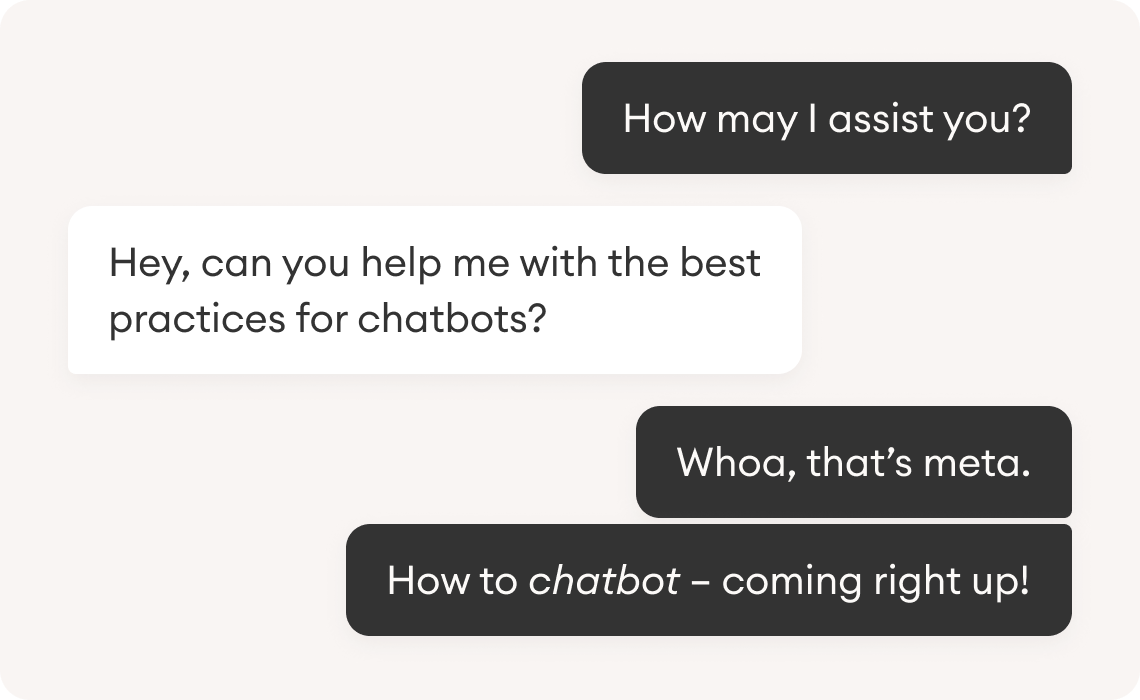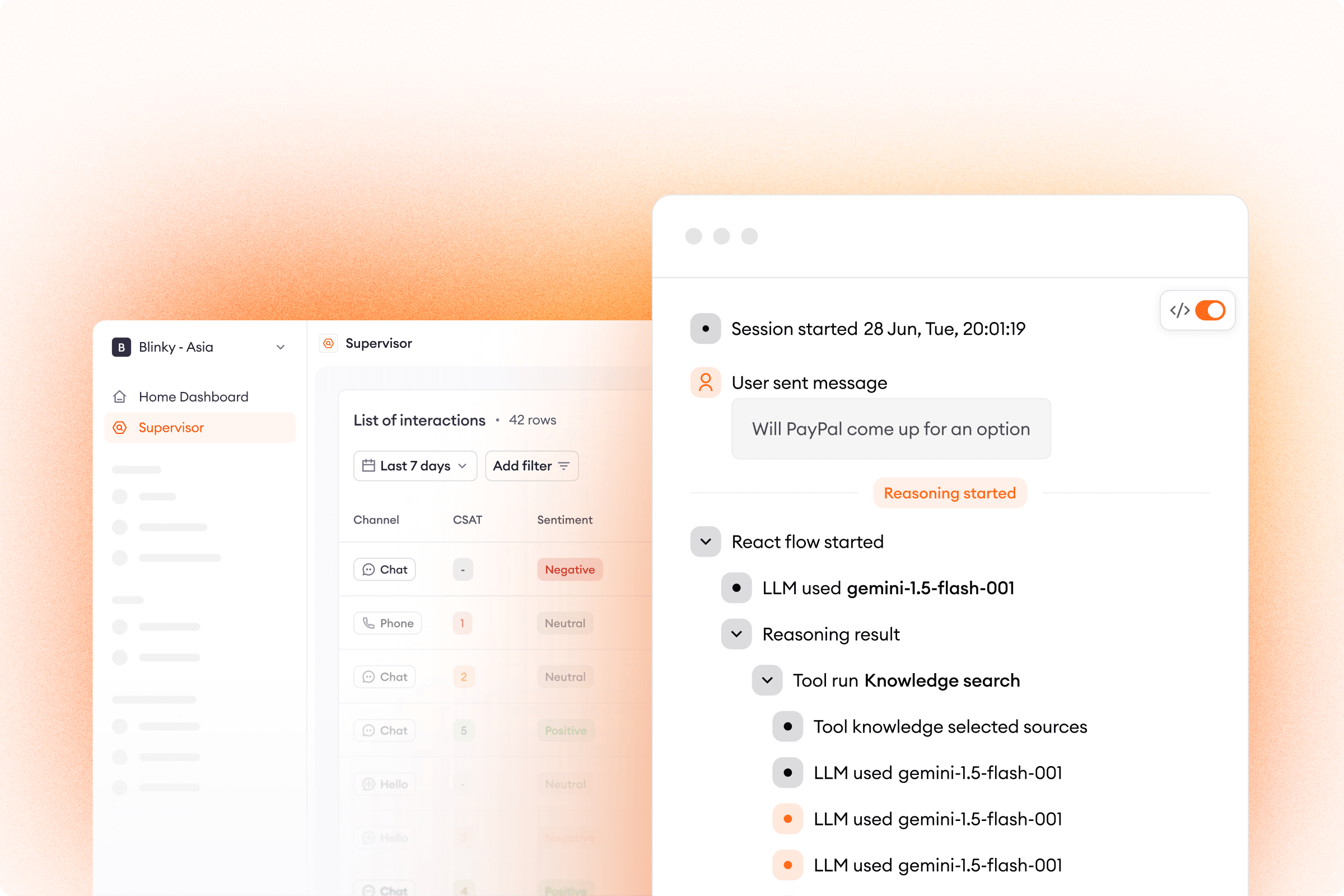Using an AI chatbot in the right way can benefit your entire business. In addition to improving customer experiences, an effective customer service chatbot can help speed up resolution times, boost agent efficiency, and even increase sales. Add this all up, and a recent Deloitte report found that 87% of businesses achieved an ROI in line with, if not faster than, expected.
So, how do you make your chatbot do it all?
We’ve compiled chatbot best practices — for everything from picking one to asking your conversational AI to improve itself — so that your chatbot can live up to all that we’ve promised.
How to choose your chatbot
First things first — best practices for choosing a chatbot.
While most chatbots share the same foundational features, there’s a wide range of differences and specializations, including the type of large language model (LLM) it’s trained on. Because of that, there isn’t an out-of-the-box, one-size-fits-all chatbot solution for businesses.
Need a crash course on common AI terms and phrases in customer support? From LLMs to tokens, Zowie’s AI Dictionary has you covered.
Here are 5 chatbot best practices to remember when shopping for the ideal chatbot for your business.
1. Know your business’s needs
Most solutions will hype themselves as the latest, greatest, innovative-est. But marketing buzzwords alone can't help when it comes to delivering an effective solution. To ensure success, you need a chatbot that will serve you how you need it to. Start by writing down why you need a chatbot, what features it should include, and what you ultimately want to accomplish — as well as the timeline you want to do so.
When you have a detailed checklist of what you need, it’s easier to cut through the clutter and find the right solution for you.

2. Take advantage of AI advancements
Since you started reading this, AI has already evolved. Make sure your chatbot keeps up with ever-improving technology — from industry-specific LLMs to generative AI.
Choosing a chatbot that's always innovating equips you today — with time and resources reallocated to more complex issues — and sets you up for tomorrow — with ongoing access to groundbreaking features that scale with your business.
By effectively incorporating both, you can implement a truly future-proof solution.
3. Look for leaders in recognition and deflection
The #1 reason businesses use conversational AI is to improve agent productivity. To make the most of your team’s time, focus on chatbot performance. Choose a chatbot provider with leading recognition and deflection rates (definitions coming right up). At Zowie, for instance, the new X2 GenAI Engine can understand and assist with 92% of customer questions.
Typically, a chatbot’s recognition rate refers to how well it can understand customer queries.
Its deflection rate tells you what percentage of tickets it can handle effectively without needing human intervention.

Finding chatbot providers with high deflection and recognition rates translates to tangible results. When your chatbot can resolve most customer questions accurately and independently, it frees up your agents to be more productive and focus on those high-value interactions.
4. Speak to your customers in their language
Not all chatbots can understand and respond in multiple languages. So, if you have customers from diverse backgrounds, you’ll probably want to consider a multilingual chatbot that can understand and respond to your customers in their native language.
5. Unlock new revenue
Are there chatbots that not only save money — but make money?
Yes, there are.
Choose a chatbot that can generate sales — by spotting when a customer is ready to buy, suggesting personalized product recommendations, and providing real-time support at checkout.
How to set up your chatbot
Ideally, setting up your new chatbot should take less than a week. But without the right support, it can be a painstaking, resource-draining, all-consuming headache.
Good thing you’ve got these 3 chatbot best practices to guide you through the process smoothly.
1. Don’t start from scratch
Most chatbots come with built-in actions for faster implementation. For example, Zowie has over 75 prebuilt automations, allowing you to automate the most common ecommerce questions from day one.
Use these as a template to get your chatbot up and running. Then, you’ll be able to customize and add new automations.

2. Automate things off your plate
Chatbots can handle complex, time-saving tasks, like managing orders, providing tracking updates, and even suggesting products based on user behavior and past purchases. Streamlining these workflows not only lightens your workload but also delivers a consistent, positive experience across all interactions.
With the right automated solution, it’s like adding a super agent — one that knows your business inside and out and never gets tired.
3. Train your chatbot well
To reduce unnecessary work for your human agents, you want your chatbot to answer customer queries accurately the first time with responses that are on-brand.
But before your chatbot can do either of those things, it needs to learn how. Luckily, AI is a quick learner. With leading solutions, you can instantly scan your internal knowledge base. In a matter of minutes, your chatbot can draw from relevant information about your products, services, and messaging whenever it needs it.
How to improve your chatbot
We promised you chatbot best practices, not kind-of-okay practices. If you want to make the most out of your chatbot, data collection is the way to go. Trust us — your customers, support team, and profits will appreciate it.
Here are 3 chatbot best practices for making ongoing improvements.
1. Let the numbers talk
Most chatbots have tracking tools that show you things like the percentage of queries resolved and the average customer satisfaction ratings.
These stats aren’t just fun for the analytics folks. By monitoring your metrics, you’ll see patterns that can tell you where your weak areas are and point you to improvements.

2. Ask your customers (and actually listen)
Collecting feedback from your customers about their experience with your chatbot can provide nuanced insights that the numbers can’t — sorry, analytics folks.
Make sure you get enough feedback so that you can find patterns in it.
Then, implement the feedback. Whether it’s adding new chatbot workflows, simplifying your system, or something else entirely, put in the work now. Your customers will thank you later.

3. Stay in sync
Seasons change, and so do customer questions. Depending on the time of year — from annual peaks like Black Friday or summer blowout sales to one-off events specific to your industry or business — your customers’ needs will shift.
Keep your responses precise and your offers enticing by updating your AI with relevant details about deals, discounts, and special services.
Add the world’s most helpful chatbot
Ready to make today’s leading technology work for you?

.avif)

.avif)
.svg)







